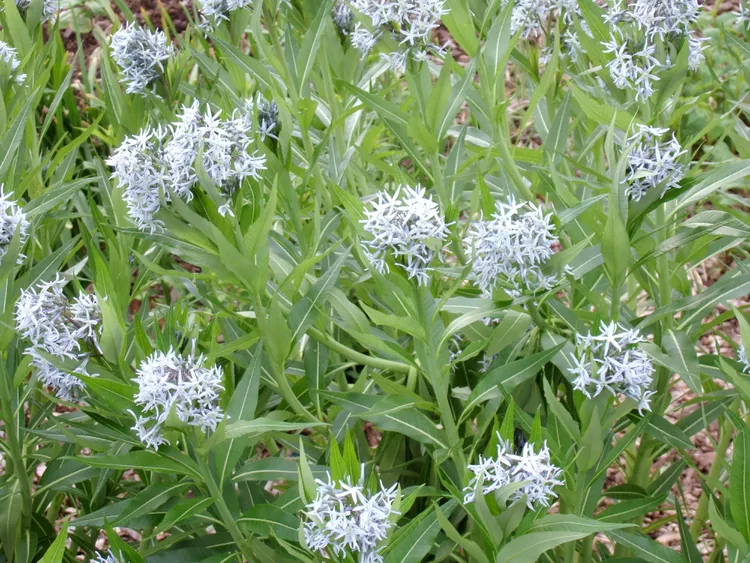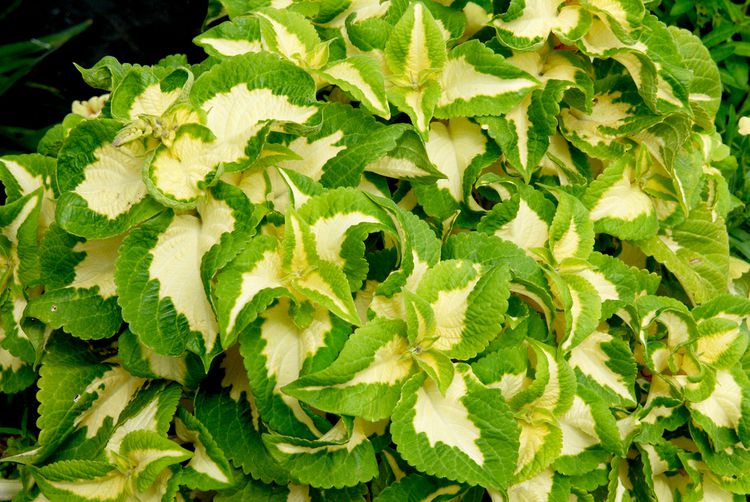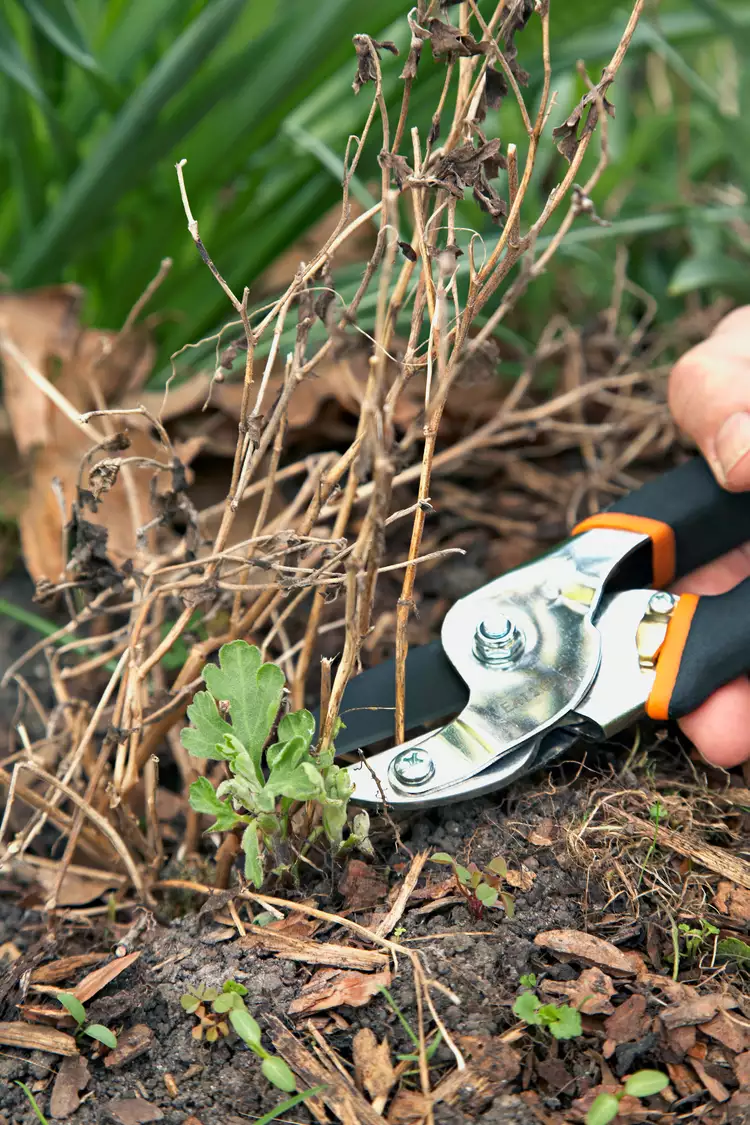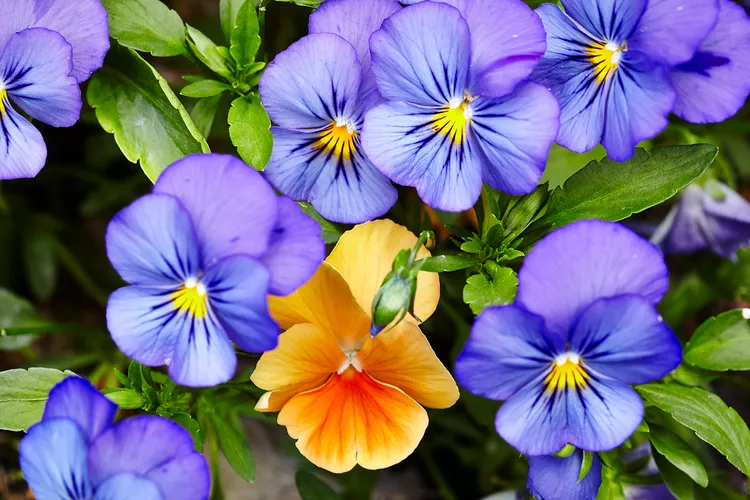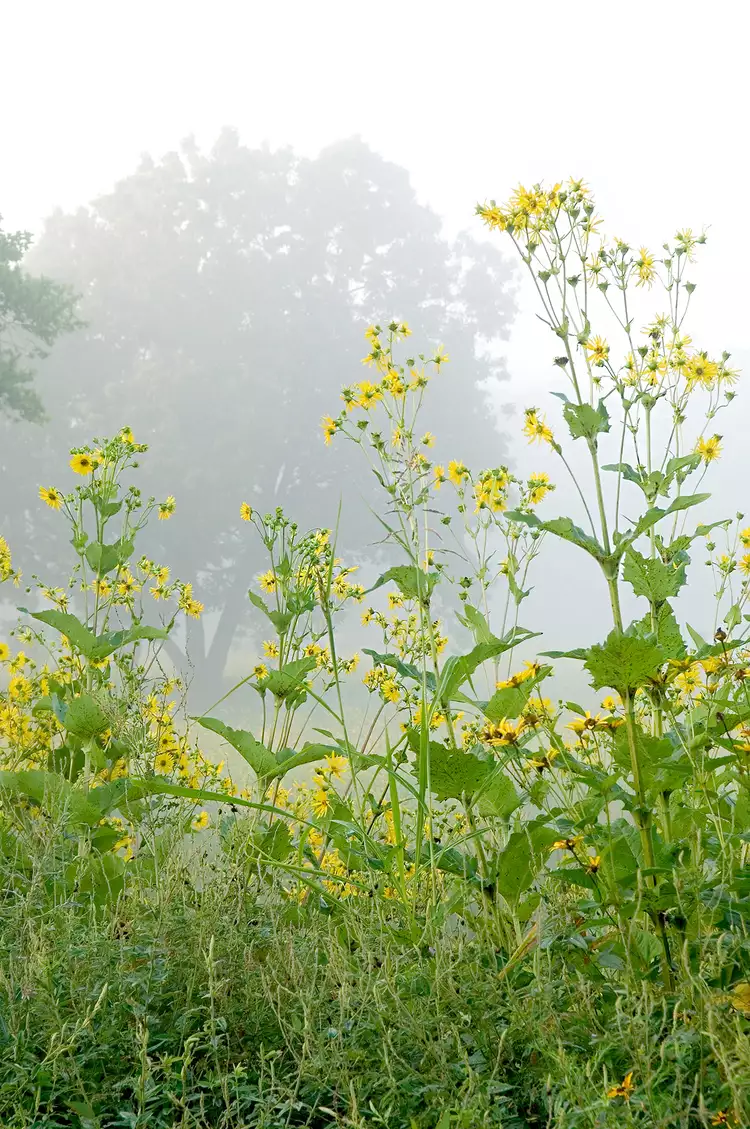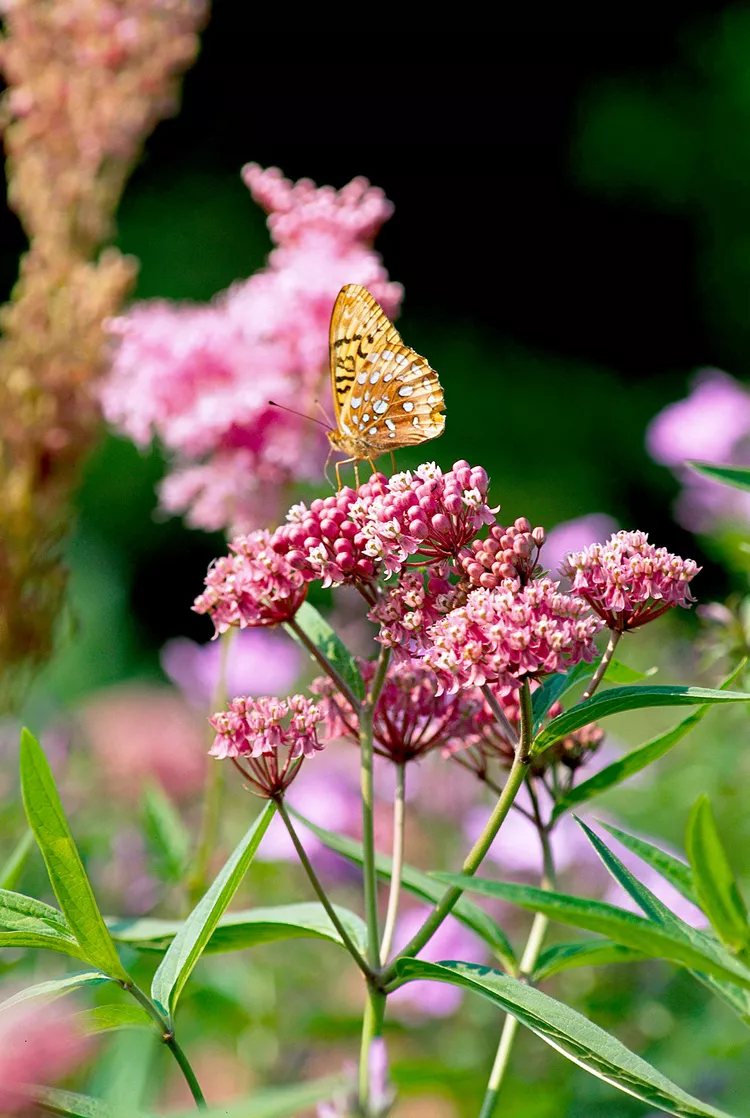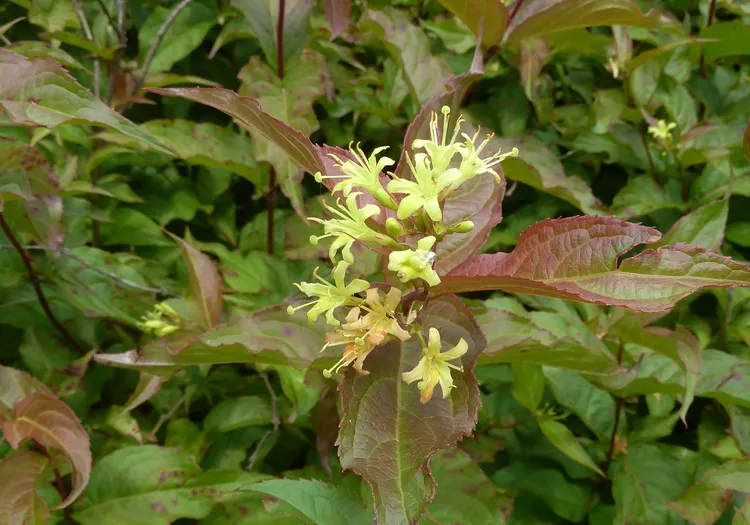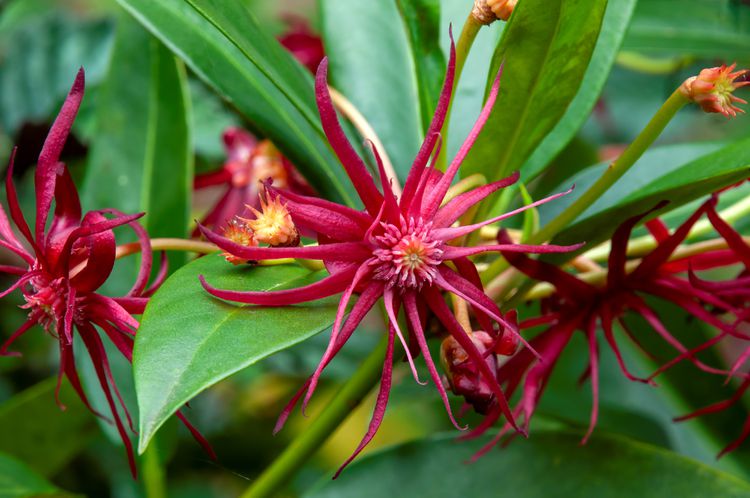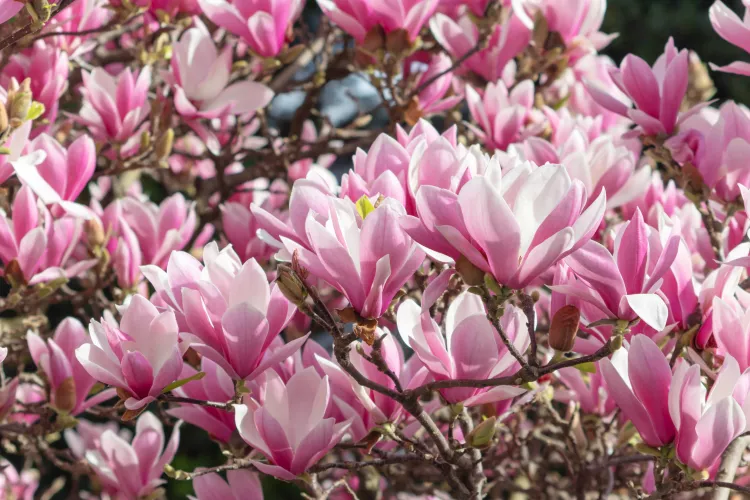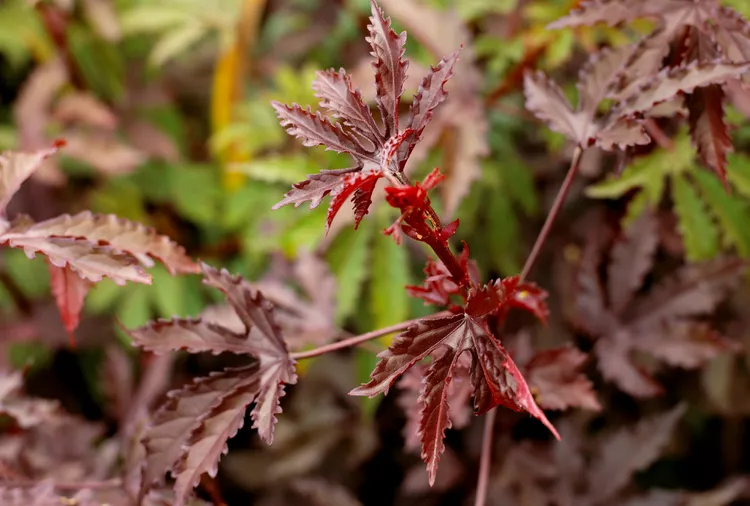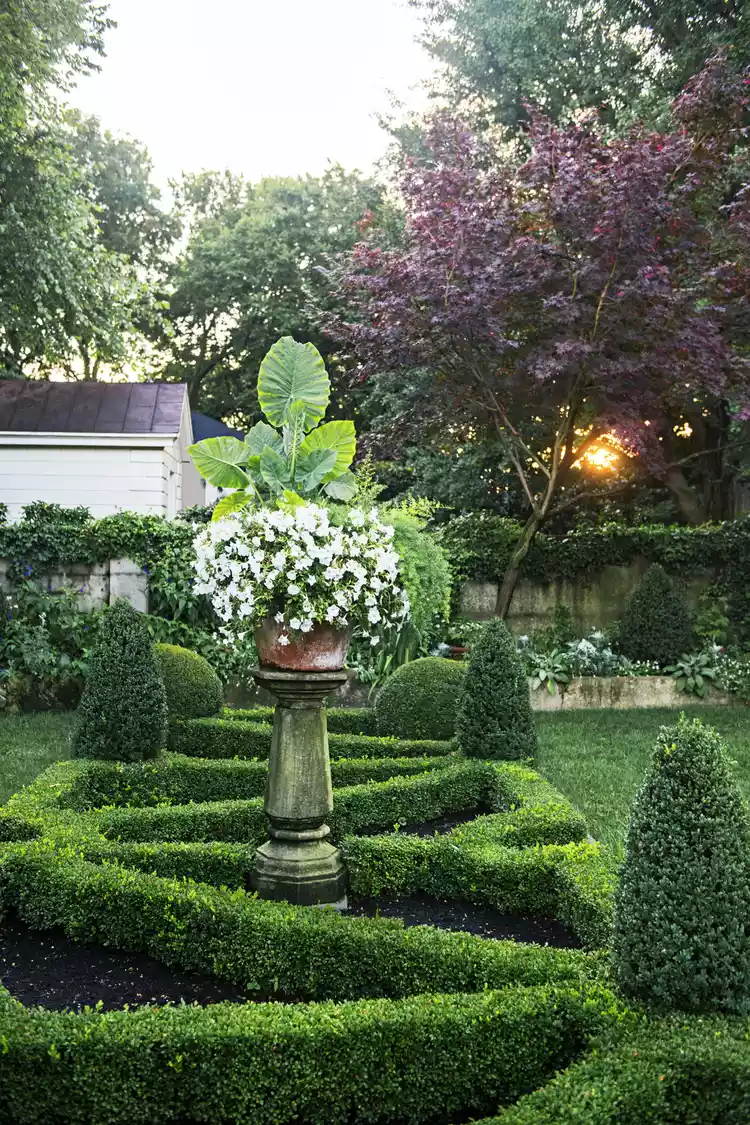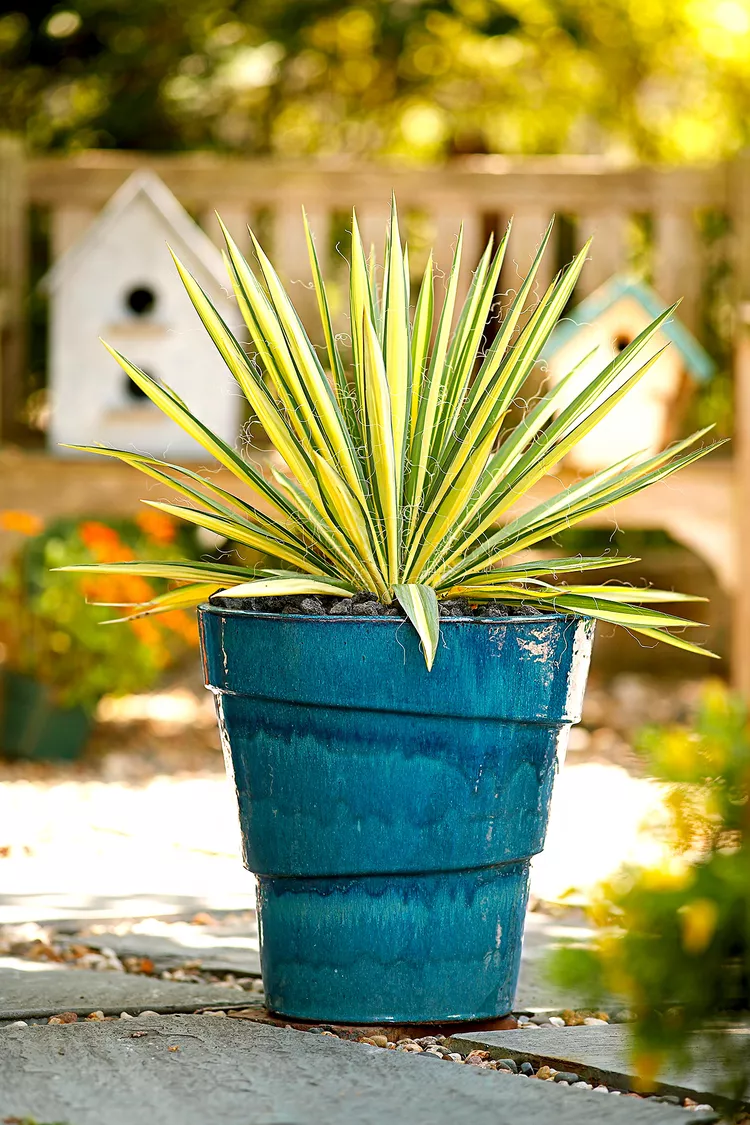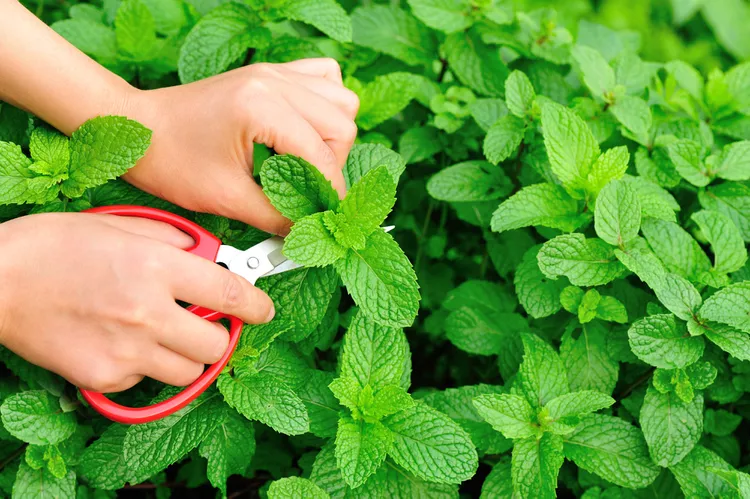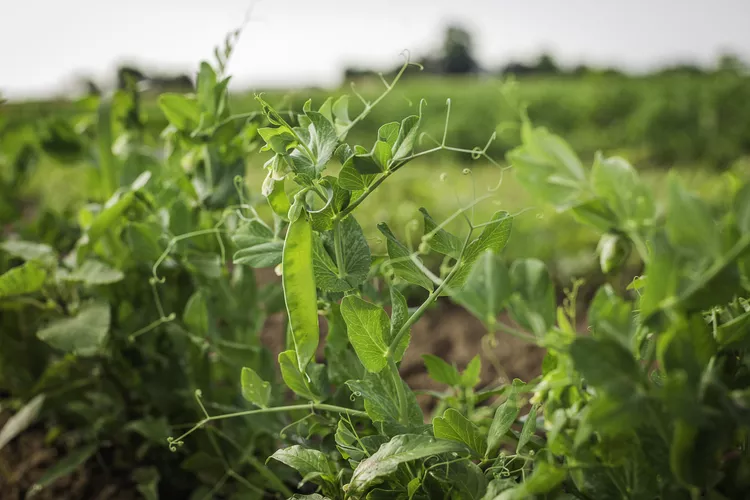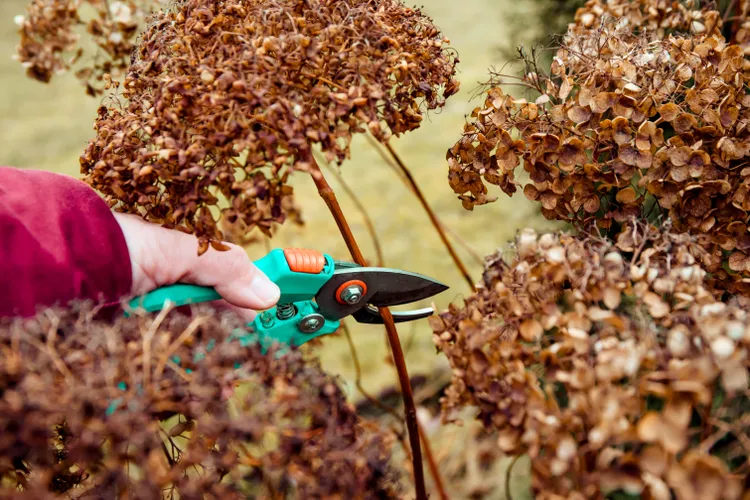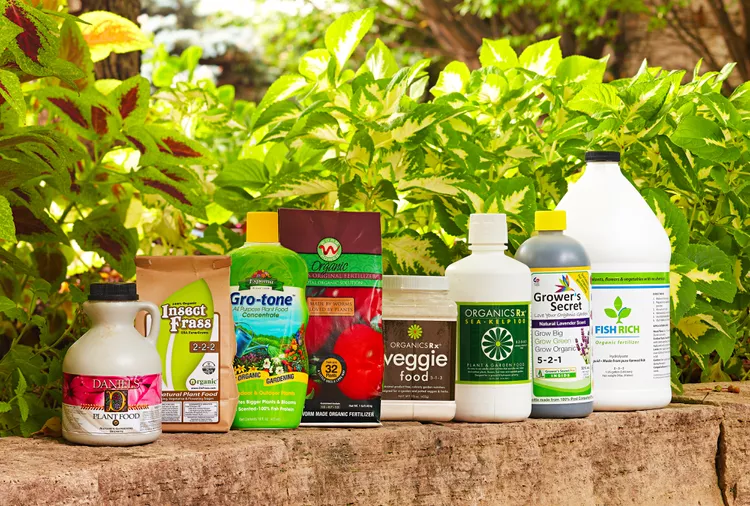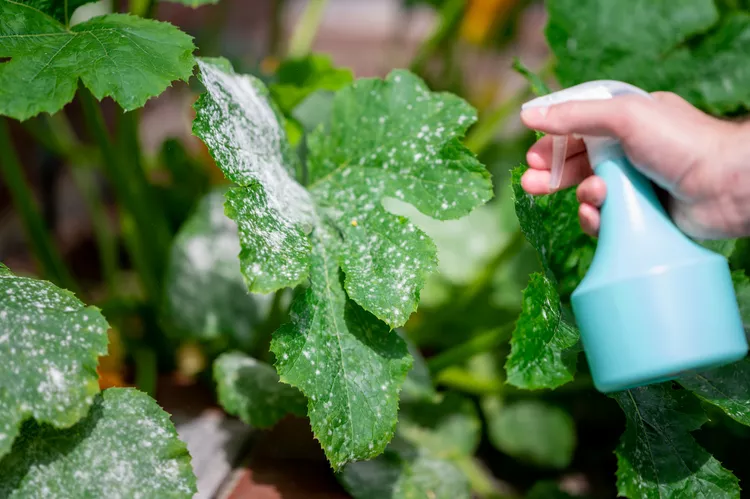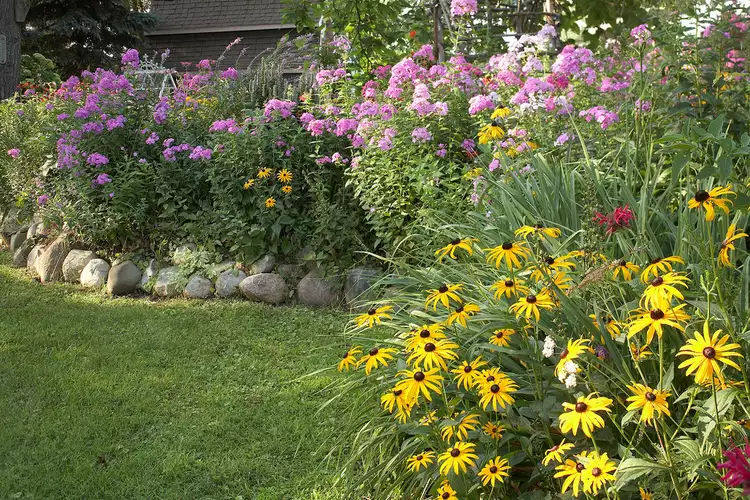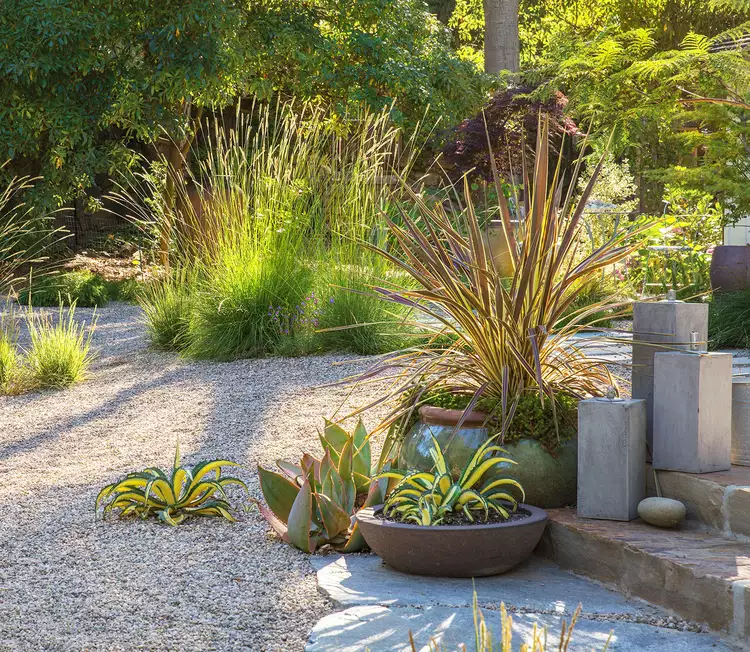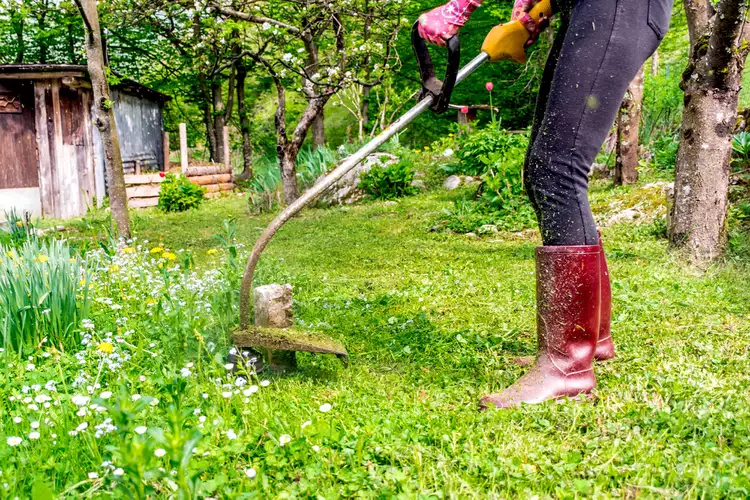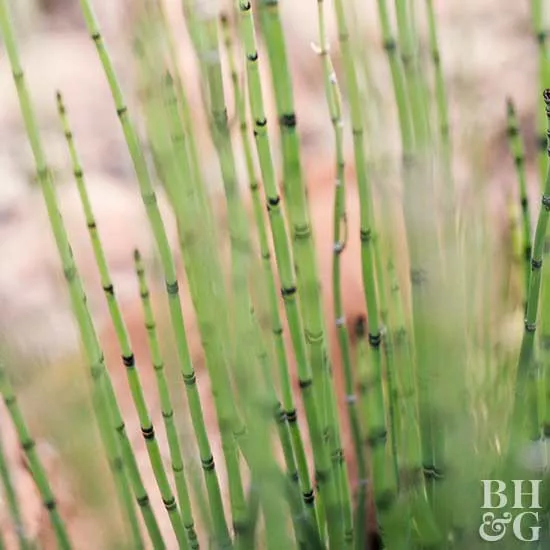As its name suggests, eastern bluestar (Amsonia tabernaemontana) produces large clusters of light blue star-shaped flowers. Native to North America where it grows in meadows and open woodlands, this perennial attracts pollinators. Bees and butterflies are drawn by the plant’s traits: color, height, shape, and plentiful pollen and nectar. Eastern bluestar offers the additional desirable features of deer resistance and low maintenance.
Placed around your landscape, eastern bluestar creates interest with its airy clouds of blue flowers in May and June, followed by long, narrow seed pods that hang from the tops of the stems. Its willow-shaped green leaves turn an eye-catching yellow-gold in fall.
Eastern Bluestar Overview
| Genus Name | Amsonia tabernaemontana |
| Common Name | Eastern Bluestar |
| Additional Common Names | Willow Amsonia, Blue Dogbane, Blue Star |
| Plant Type | Perennial |
| Light | Part Sun, Sun |
| Height | 3 to 4 feet |
| Width | 2 to 3 feet |
| Flower Color | Blue |
| Foliage Color | Blue/Green |
| Season Features | Colorful Fall Foliage, Spring Bloom |
| Special Features | Attracts Birds, Low Maintenance |
| Zones | 3, 4, 5, 6, 7, 8, 9 |
| Propagation | Division, Seed, Stem Cuttings |
| Problem Solvers | Deer Resistant |
Where to Plant Eastern Bluestar
Plant Eastern bluestar in USDA Hardiness Zones 3-9 in a spot where it will get plenty of sunlight. Use this perennial in garden beds, along fences, and in native habitat gardens. It also works on slopes of rain gardens. Just note that this perennial develops substantial roots and after five or more years is difficult to move. Plant it where it has plenty of space to mature in place.
When and How to Plant Eastern Bluestar
Eastern bluestar may be planted whenever the ground is workable and the plants are available. The best times to plant bluestar is mid-spring and fall. It's easiest to start with young bluestar plants available from garden centers or online nurseries.
To plant your bluestar, dig a hole that's a little larger in diameter than the plant's rootball. Set your plant in the hole so that it's at the same soil level it was in its nursery pot. Fill in with soil you removed from the hole, gently firming it around your bluestar plant. Water well, and if the soil settles, add more soil to level out the ground again.
Care Tips
Eastern bluestar is a drought-tolerant native plant that is low maintenance.
Light
Choose a spot in full sun or part shade where the area receives a half day of sun. In shady areas, the stems will likely flop over and the plant will lose its upright shape.
Soil and Water
Plant 2 to 3 feet apart in average garden soil that drains well and doesn't stay soggy. Apply supplemental water the first year if rainfall is scarce.
Fertilizing
Nothing more than a top-dressing of compost in the spring is needed to give Eastern bluestar all the nutrients it needs to thrive.
Pruning
If needed, cut back the stems by up to one-third after blooming to avoid stems leaning from the weight of the leaves and seedpods. This may be more of a problem if planted in more shade, which will result in weaker stems. At the end of the growing season, you can leave the plant standing for overwintering insects. Then, cut back the dead stems in spring to make way for new growth.
Pests and Problems
Eastern bluestar is untroubled by most insects. Plus, deer and rabbits tend to leave this plant alone. The plant contains a latex sap that seems to act as a deterrent.
Propagating Eastern Bluestar
You can divide young eastern bluestar in spring before new growth appears. Or, if you let the seedpods dry on the plant, you can collect the seeds or allow them to fall to the ground and germinate. If you opt for the latter approach, you may end up with more eastern bluestar than you can use, but the seedlings are easy to dig up and plant elsewhere or give to gardening friends. To start collected seeds, they'll need cold stratification first. Then, nick the seed coat and soak the seeds overnight before sowing.
Types of Bluestar
Fringed Bluestar
Fringed bluestar (Amsonia ciliata) tops out at 3 feet tall and has narrow leaves. Its pale blue starry flowers appear in mid-spring. The stems and new leaves have small hairs, hence the "fringed" part of its name. This bluestar is hardy in Zones 5-9.
Narrow-leaf Bluestar
Also called threadleaf bluestar (Amsonia hubrichtii), this species has ferny foliage and pale blue spring flowers. It requires full sun and grows best in a well-drained location, but can withstand drought well. It grows about 3.5 feet tall and is hardy in Zones 4-9.
Shining Bluestar
Shining or Ozark bluestar (Amsonia illustris) looks similar to eastern bluestar, except its leaves are more leathery and shiny. Its ice-blue flower clusters are also a tiny bit smaller. It's hardy in Zones 5-9.
Companion Plants for Eastern Bluestar
False Indigo
The spring-blooming false indigo (Baptisia australis) makes a beautiful combination of blues with eastern bluestar. Plus, bees and butterflies will feed on the blooms of both native plants.
Golden Alexander
A native prairie plant with yellow flowers, golden Alexander (Zizia aurea) blooms in May and June. It grows in small, tight clumps with many bright flowers on each plant. Its shape and form contrast nicely with bluestar.
Siberian Iris
Spring-blooming Siberian iris (Iris sibirica) in shades of blue, purple, white, and yellow makes a pretty companion for Eastern bluestar. This iris is also deer-resistant so it's a good choice for areas where these animals roam.
